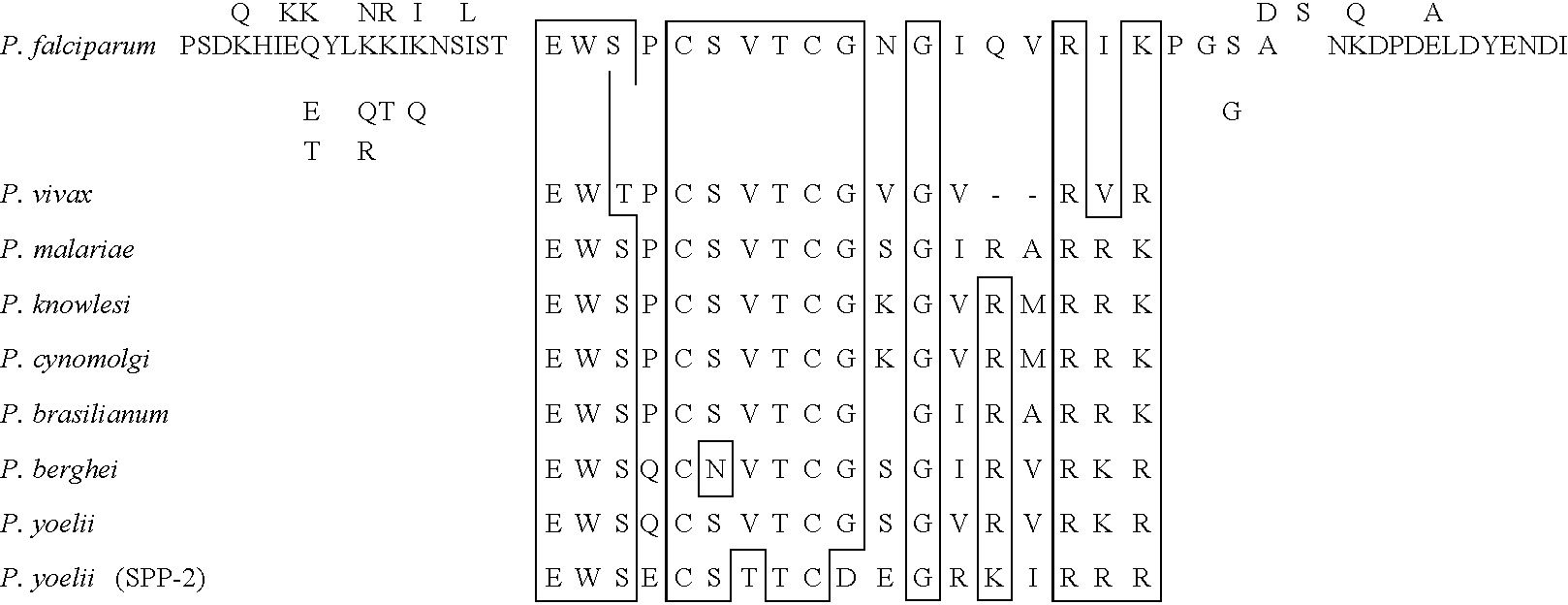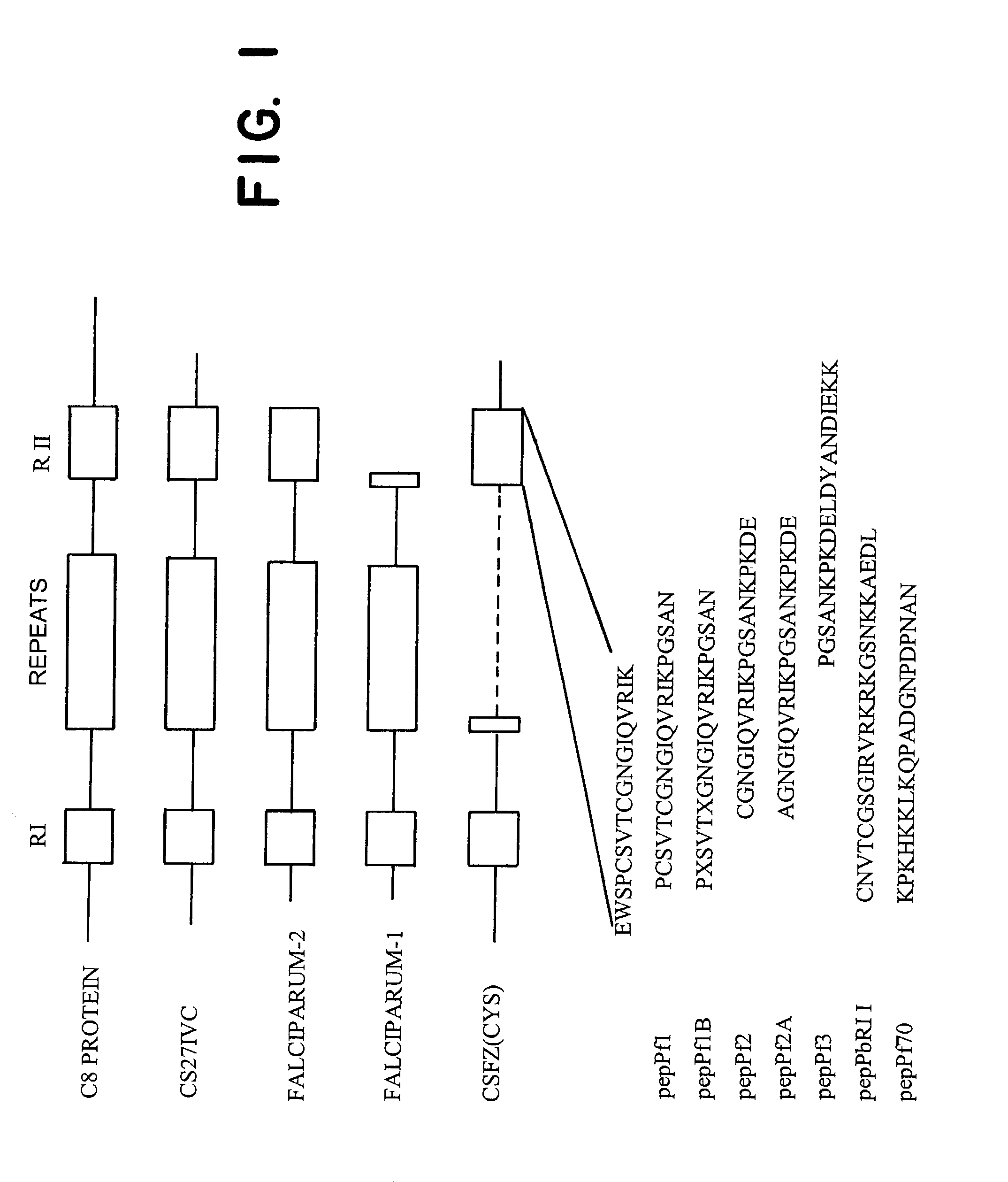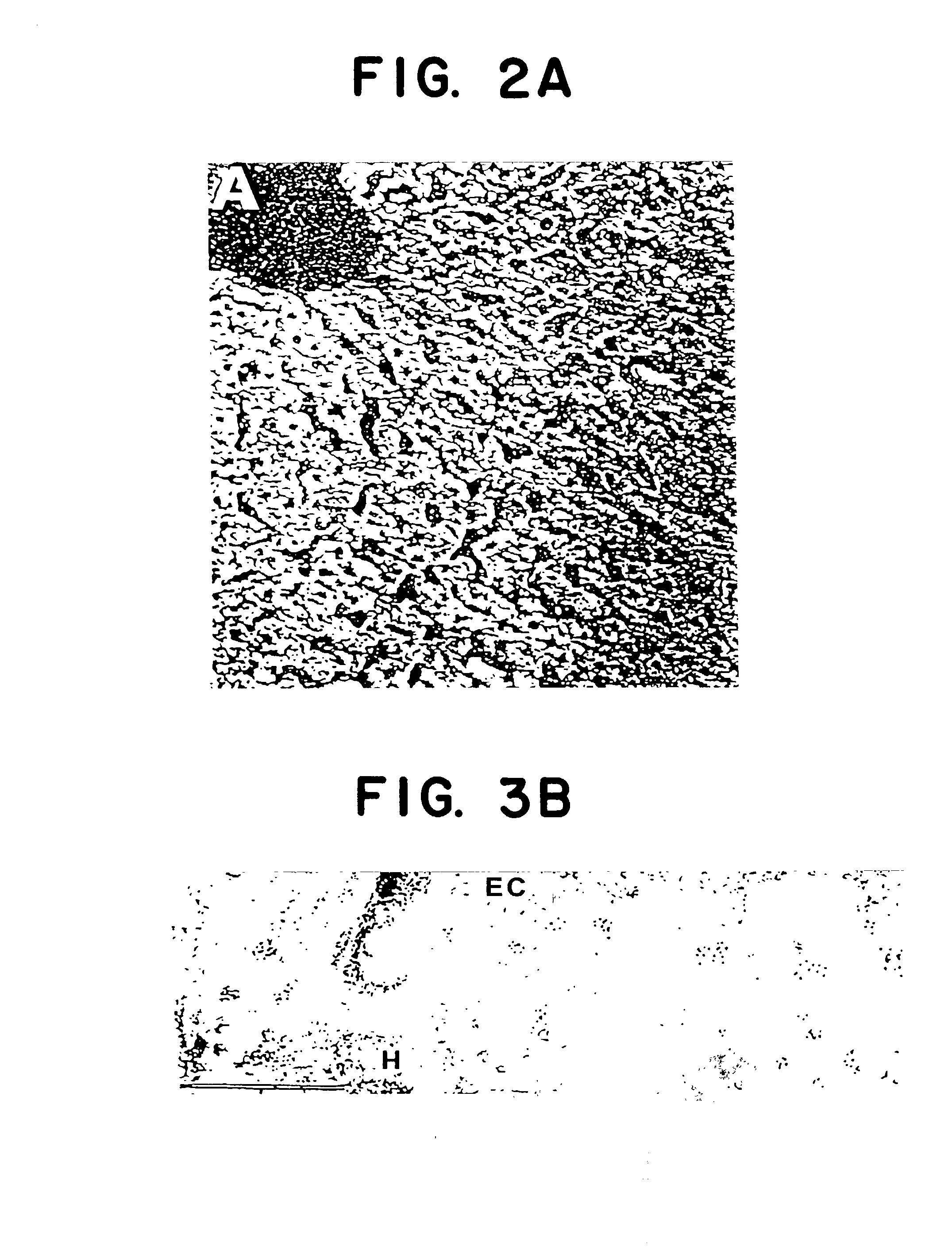Compositions and methods for inhibiting hepatocyte invasion by malarial sporozoites
- Summary
- Abstract
- Description
- Claims
- Application Information
AI Technical Summary
Benefits of technology
Problems solved by technology
Method used
Image
Examples
example 2
[0131] Isolation of Hepatocyte Membranes
[0132] Fractionation of rat liver cells was performed as described by Hubbard A. L. et al., J. Cell. Biol. 96:217-229, 1983. In brief, perfused rat livers were homogenized and subjected to sucrose gradient centrifugation. The membrane preparation and the pellet, consisting mostly of mitochondria and rough endoplasmic reticulum, from the final centrifugation step were processed for ultrastructural examination.
example 3
[0133] Electron Immunomicroscopy
[0134] Rat or mouse liver tissue or hepatocyte subcellular fractions from Example 2 were fixed in PBS containing 1% glutaraldehyde (grade 1, Sigma, St. Louis, Mo.) and 4% paraformaldehyde (Kodak, Rochester, N.Y.), dehydrated in ethanol, and embedded in LR White (Polysciences, Warrington, Wash.). (Frevert et al., Infect. and Immun. 60:2349-2360, June 1992.) Normal human liver was embedded in Lowicryl K4M (Ted Pella, Redding, Calif.). Ultrathin sections were labelled by incubating them sequentially with 10-50 .mu.g / ml CS27IVC, CSFZ (Cys), Falc-2, or Falc-1 for 30 min.; 15 .mu.g / ml MAb 2A10 for 30 min.; protein A-gold 15 nm (PAG15, 1:30; Amersham, Arlington, Ill.) or goat anti-mouse IgG gold 10 nm (GAM10, 1:30; Amersham) for 30 min. Control specimens were incubated in the absence of CS and only with the gold conjugates. Photographs were taken with a Philips EM 301 electron microscope.
example 4
[0135] HeDG2 Cell Binding Assay
[0136] For indirect immunofluorescence, HepG2 cells (ATCC number HB8065, Rockville, Md.; Knowles, B. P., et al., Science 209:497-499, 1980) were grown on slides (Cel-Line Associates, Inc., Newfield, N.J.) overnight in minimum essential medium with 10% fetal calf serum (FCS-MEM; GIBCO, Grand Island, N.Y.), 1 mM L-glutamine (GIBCO), 3 mg / ml glucose (Sigma), 1.times.nonessential amino acids (GIBCO), 50 .mu.g / ml penicillin, and 100 .mu.g / ml streptomycin (GIBCO). For the enzyme-linked immunosorbent assay, 10.sup.5 HepG2 cells were deposited in 96-well Falcon tissue culture plates (Becton Dickinson, Oxnard, Calif.) and grown for 24 hr. in FCS-MEM. The cells were fixed with 4% paraformaldehyde, washed three times with PBS, and stored at 4.degree. C. in BSA / TPBS until use. Before the experiments, plates were blocked for 2 hr. at 37.degree. C. with 1% gelatin, 0.05% Tween in PBS (pH 7.4) (gelatin / TPBS). The cells were sequentially incubated at 37.degree. C. wit...
PUM
| Property | Measurement | Unit |
|---|---|---|
| Volume | aaaaa | aaaaa |
| Volume | aaaaa | aaaaa |
| Length | aaaaa | aaaaa |
Abstract
Description
Claims
Application Information
 Login to View More
Login to View More - R&D
- Intellectual Property
- Life Sciences
- Materials
- Tech Scout
- Unparalleled Data Quality
- Higher Quality Content
- 60% Fewer Hallucinations
Browse by: Latest US Patents, China's latest patents, Technical Efficacy Thesaurus, Application Domain, Technology Topic, Popular Technical Reports.
© 2025 PatSnap. All rights reserved.Legal|Privacy policy|Modern Slavery Act Transparency Statement|Sitemap|About US| Contact US: help@patsnap.com



